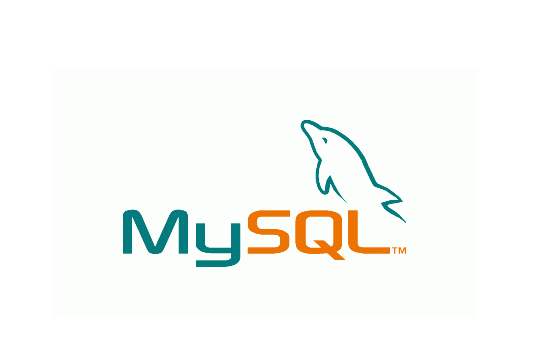
Linux环境下 Mysql5.7 的安装与卸载
软件:VM虚拟机CentOS7Mysql5.7安装:更换yum源1、更换国内yum源 阿里或者网易(先安装wget)yum install wget -y2、备份旧yum源文件mv /etc/yum.repos.d/CentOS-Base.repo /etc/yum.repos.d/CentOS-Base.repo.backup3、更...
软件:
VM虚拟机
CentOS7
Mysql5.7
安装:
更换yum源
1、更换国内yum源 阿里或者网易(先安装wget)
yum install wget -y2、备份旧yum源文件
mv /etc/yum.repos.d/CentOS-Base.repo /etc/yum.repos.d/CentOS-Base.repo.backup3、更换为阿里yum源
wget -O /etc/yum.repos.d/CentOS-Base.repo http://mirrors.aliyun.com/repo/Centos-6.repo4、更新本地缓存
yum clean all
yum makecachemysql安装
1、获取官网5.7rpm包
wget https://dev.mysql.com/get/mysql57-community-release-el7-11.noarch.rpm
2、使用rpm安装
rpm -ivh mysql57-community-release-el7-11.noarch.rpm3、安装mysql服务
yum -y install mysql-server4、修改Mysql配置文件
vi /etc/my.cnf[mysqld]
#
# Remove leading # and set to the amount of RAM for the most important data
# cache in MySQL. Start at 70% of total RAM for dedicated server, else 10%.
# innodb_buffer_pool_size = 128M
#
# Remove leading # to turn on a very important data integrity option: logging
# changes to the binary log between backups.
# log_bin
#
# Remove leading # to set options mainly useful for reporting servers.
# The server defaults are faster for transactions and fast SELECTs.
# Adjust sizes as needed, experiment to find the optimal values.
# join_buffer_size = 128M
# sort_buffer_size = 2M
# read_rnd_buffer_size = 2M
datadir=/var/lib/mysql
socket=/var/lib/mysql/mysql.sock
# Disabling symbolic-links is recommended to prevent assorted security risks
symbolic-links=0
log-error=/var/log/mysqld.log
pid-file=/var/run/mysqld/mysqld.pid
# 设置3306端口
port = 3306
# 允许最大连接数
max_connections=1000
# 服务端使用的字符集默认为8比特编码的latin1字符集
character-set-server=utf8
# 创建新表时将使用的默认存储引擎
default-storage-engine=INNODB
# sqlmodel设置
sql_mode='STRICT_TRANS_TABLES,NO_ZERO_IN_DATE,NO_ZERO_DATE,ERROR_FOR_DIVISION_BY_ZERO,NO_AUTO_CREATE_USER,NO_ENGINE_SUBSTITUTION'
[mysql]
# 设置mysql客户端默认字符集
default-character-set=utf8
5、mysql启动
systemctl start mysqld//启动命令
systemctl stop mysqld//关闭服务
systemctl restart mysqld//重启服务
systemctl enable mysqld//设置开机自启动6 、在日志文件中获取安装时生成的默认密码
grep 'password' /var/log/mysqld.log7、登录mysql(输入上一步获取的密码)
mysql -uroot -p默认密码8、修改密码为“123456”
alter user 'root'@'localhost' identified by '123456';
远程访问设置
1、修改远程访问权限
grant all privileges on *.* to 'root'@'%' identified by '123456' with grant option;2、刷新权限
flush privileges;3、防火墙设置
systemctl status firewalld//查看防火墙状态
//active状态下需要开启3306端口的访问
firewall-cmd --zone=public --add-port=3306/tcp --permanent//开启3306端口
firewall-cmd --reload//重启防火墙
//关闭防火墙
systemctl stop firewalld.service完成安装配置可远程连接使用。
完全卸载
1、查看mysql安装情况
rpm -qa | grep -i mysql[root@node04 ~]# rpm -qa | grep -i mysql
mysql-community-server-5.7.36-1.el7.x86_64
mysql-community-common-5.7.36-1.el7.x86_64
mysql-community-libs-compat-5.7.36-1.el7.x86_64
mysql-community-libs-5.7.36-1.el7.x86_64
mysql57-community-release-el7-11.noarch
mysql-community-client-5.7.36-1.el7.x86_64
2、删除上图安装的全部软件例如:
rpm -ev mysql-community-server-5.7.36-1.el7.x86_64 --nodeps3、查找相关mysql的文件
# find / -name mysql
# whereis mysql
[root@node04 ~]# find / -name mysql
/var/lib/mysql
/var/lib/mysql/mysql
/usr/lib64/mysql
/usr/bin/mysql
/usr/share/mysql
/etc/selinux/targeted/active/modules/100/mysql
/etc/logrotate.d/mysql
[root@node04 ~]# whereis mysql
mysql: /usr/bin/mysql /usr/lib64/mysql /usr/share/mysql /usr/share/man/man1/mysql.1.gz
4、删除全部文件例如:
rm -rf /var/lib/mysql5、检查是否删除干净
rpm -qa | grep -i mysql
#如果没有显式则表示卸载完成更多推荐
 已为社区贡献2条内容
已为社区贡献2条内容









所有评论(0)